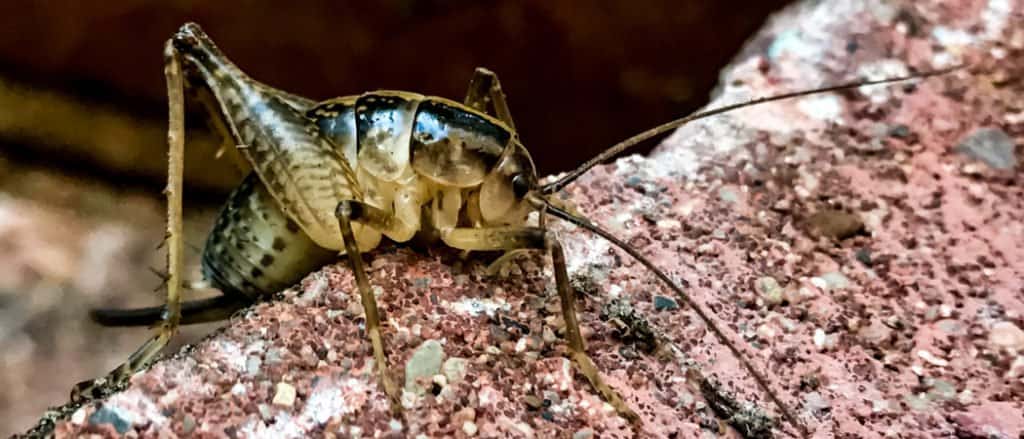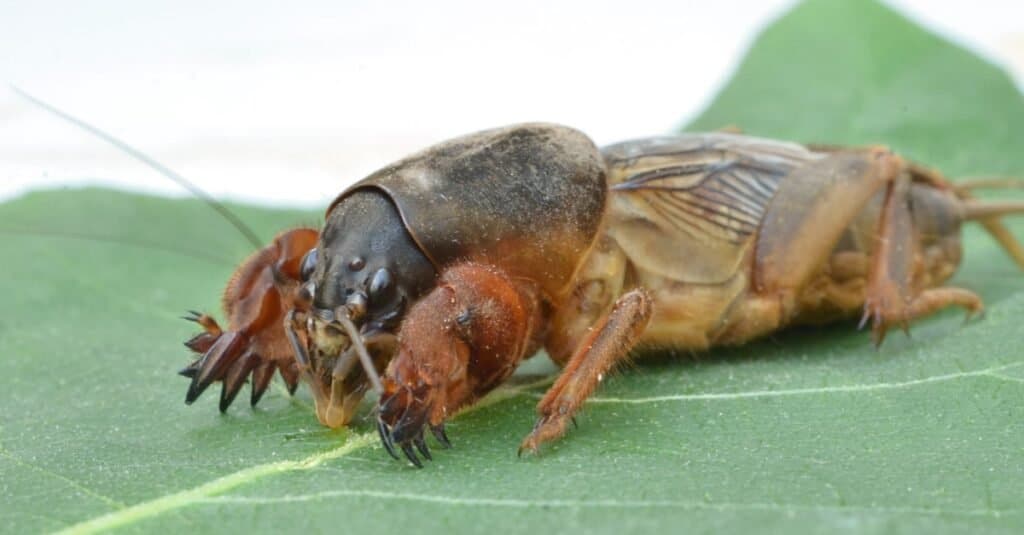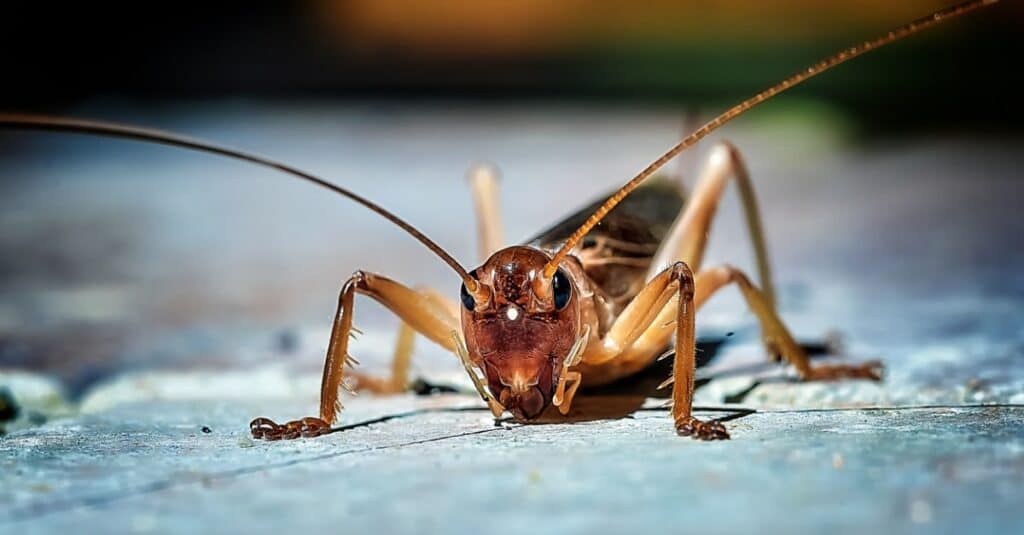Noisy and active bugs, crickets are commonly found around the world. You may be wondering: how long do crickets live, and what is their life cycle like? Often considered a lucky insect in many cultures, crickets may not live the luckiest lives.
In this article, we’ll learn exactly how long crickets live, what their life cycle is like, and how their life compares to that of other insects in the world. While hearing crickets is often a sign that something is boring, this article won’t be! Let’s get started.

The most distinctive feature of a cricket is its long legs.
©iStock.com/Petr Ganaj
How Long Do Crickets Live?
Crickets generally live for 90 days, depending on the season and predators. Some house crickets can survive in homes over two years or more without predation or cold weather!
However, most crickets rarely live longer than a few weeks, which is why many crickets breed all at once. Their species needs sustaining, and the cricket mating time of year is an important one to these chirping insects.
Despite their need to mate and breed, most crickets live solitary lives. They are nocturnal as well, which is why you likely hear more crickets chirping at dusk and in the evenings than during the day.
Not only are crickets considered pests in some locations, but crickets are also eaten by humans and kept as pets as well. Depending on the culture, the interpretation of the cricket varies greatly!
Most people in the United States consider crickets to be an unfortunate pest or a live food for their pet reptile. No matter the case, crickets are here to stay, however brief their lifespan may be!
Speaking of lifespan, let’s learn a bit more about what the average cricket life cycle is like.
The Average Cricket Life Cycle

©Nickie Drysdale/Shutterstock.com
Curious to learn more about how crickets age and grow? Let’s take a look at a wild cricket’s life cycle and how it affects their growth.
Eggs
Time of year is very important for a cricket’s lifespan. A female cricket needs to lay her eggs during fall so that the eggs can hatch after winter has passed. This is the time of year where most crickets do their mating ritual.
Crickets have a fairly elaborate mating ritual and courtship, and you can imagine it involves a lot of chirping. It has been studied that many male crickets mount other male crickets during this time, whether they have been spurned by female crickets or not.
However, once a female cricket has mounted a male, she can lay her eggs in the soil; many species of cricket can lay hundreds of eggs at a time. This may be why many homeowners notice an influx of crickets all at once!
Nymphs
Once crickets hatch from their eggs, they are known as nymphs. They will only emerge from their eggs and the soil once the weather has turned and it is warmer outside. The baby crickets will crawl from the soil, looking like smaller adult crickets but with no wings.
This is a formative time for baby crickets, as they will go through multiple molting processes during the first few weeks of their lives. Most nymphs take around 2-3 months to molt and emerge from their shells as fully formed adults with wings.
Adults

Time of year is very important for a cricket’s lifespan.
©muroPhotographer/Shutterstock.com
Once the molting process is complete, an adult cricket is ready to live its life- however short that life may be. Many adult crickets only live for a few months, depending on the predators in the area and the general health of the cricket.
Most cricket adults will also pass away come winter time, or even the first cold snap. They are not equipped to survive the cold, and when you consider how many predators eat crickets, their lifespan decreases drastically.

However, if a cricket is able to find shelter for the winter, like inside of a person’s home, you can expect a cricket to survive almost a year. A cricket may even survive past this point, though very few studies have been done to illustrate this. However, with a warm home and no predators in sight, a cricket can live a long and happy life.
How Does Their Lifespan Compare to Cockroaches?

Most cricket adults will pass away come winter time, or even the first cold snap.
©iStock.com/tracielouise
When it comes to insects, life is a brief and dangerous one. You may be wondering how a cricket lifespan compares to the lifespan of a cockroach, a bug that crickets are often mistaken for.
Depending on the species of cockroach, many different varieties can live at least six months, with the average time of life being closer to a year. This is a longer lifespan than a cricket, though a cockroach’s life cycle may contribute to this higher number.
Some cockroach species have been known to live for decades, depending on the size, local predators, and other factors. Crickets have not been known to live this long, across all of the different species and varieties.
Both cockroaches and crickets lay roughly 300-400 eggs at a time, leading to a large boom of insects once the gestation period is up. Cockroach babies are also born wingless, much like cricket nymphs. However, most cockroach eggs hatch after a month or so, regardless of how cold it is.
No matter the type of insect, one thing seems to be certain across all bug lifespans: it’s a short a difficult life for nearly all of them!
The photo featured at the top of this post is © iStock.com/tracielouise
Thank you for reading! Have some feedback for us? Contact the AZ Animals editorial team.






